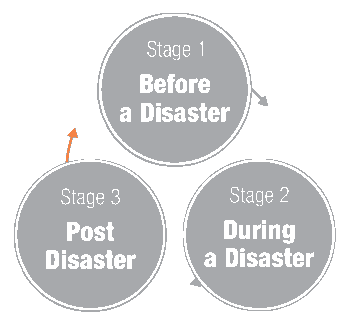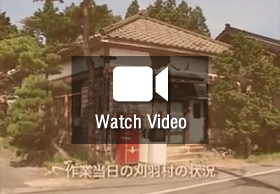

This module explores actions that are involved in post disaster recovery and rehabilitation of cultural heritage. This include not only assessments of the impact of the disaster but also long term planning initiatives for recovery and ensuring that future disaster risks are minimised as much as possible. This stage follows up on the emergency preparedness and response module (Module 4), and links the disaster risk management process back to the first stage (Module 2). It is therefore imperative to ensure that this module cohesively sums up the learning of the course to equip participants to be able to develop their own disaster risk management strategies.
Read More...

A video shown by instructor Yasumichi Murakami during his lectures on Post Disaster Assessment and Recovery
There is the possibility of teaching this module independently in a region recovering from a disaster.
For example, ICCROM organised a three week course in Haiti in partnership with the Ministry of Culture of Haiti and the Smithsonian Institution (USA) within the framework of its Cultural Recovery Project. This course focused exclusively on capacity building for professionals in cultural institutions in Haiti, to equip them to protect their own movable heritage.
An excerpt from the structure of Module 5 of the International Training Course, 2012. Lectures and site visits related to the cases discussed in the lectures were used for majority of the content in this module.
Read More...
This module explores actions that are involved in post disaster recovery and rehabilitation of cultural heritage. This include not only assessments of the impact of the disaster but also long term planning initiatives for recovery and ensuring that future disaster risks are minimised as much as possible. This stage follows up on the emergency preparedness and response module (Module 4), and links the disaster risk management process back to the first stage (Module 2),. It is therefore imperative to ensure that this module cohesively sums up the learning of the course to equip participants to be able to develop their own disaster risk management strategies.
This module covers a broad range of actions to be undertaken in the post disaster recovery phase and can be delivered as a series of core lectures focusing on general approaches/procedures to introduce participants to the subject. Themes such as community participation, long term recovery of cultural heritage in developing countries and its role in generating financial resources can be addressed in detail using secondary case examples. In the International Training Course organised by R-DMUCH, it is normally spaced over 2-3 days, interspersed with participants working independently on their own case study projects. This module should also include a site visit to the disaster affected area to make the participants understand real challenges and initiatives for post disaster recovery of cultural heritage on ground both from short and long term perspective.
An excerpt from the structure of Module 5 of the International Training Course, 2012. Lectures and site visits related to the cases discussed in the lectures were used for majority of the content in this module.
9/15 |
9/16 |
9/17 (Mon/Holiday) |
9/18 (Tue) |
9/19 (Wed) |
Planning for Recovery: Lessons from Kobe |
Self-Study |
From Response to Recovery: Great East Japan Disaster |
From Response to Recovery: Great East Japan Disaster |
Policy for Risk Management |
|
|
|
|
|
Kobe |
|
Tohoku |
Tohoku |
DMUCH |
To KOBE |
Self-Study |
To MinamiSanriku-cho |
10:00-12:00(120) |
9:30-10:00(30) |
9:30-10:45(75) |
10:00-11:10(70) |
10:00-11:10(70) |
||
Lunch |
||||
11:30-14:30(180) Lecture 16 |
Lunch |
11:30-12:40(70) |
||
12:30-15:30(270) |
+Discussion |
|||
Lunch |
Lunch |
Lunch |
||
To Tohoku |
To Kyoto |
14:00-15:10(70) |
||
To NADA |
16:00-18:00(120) |
15:30-18:00(150) |
||
15:00-17:00 |
||||
To Kyoto |
||||
+Discussion |
||||
Kyoto |
Sendai |
Minami Sanriku |
Kyoto |
Kyoto |